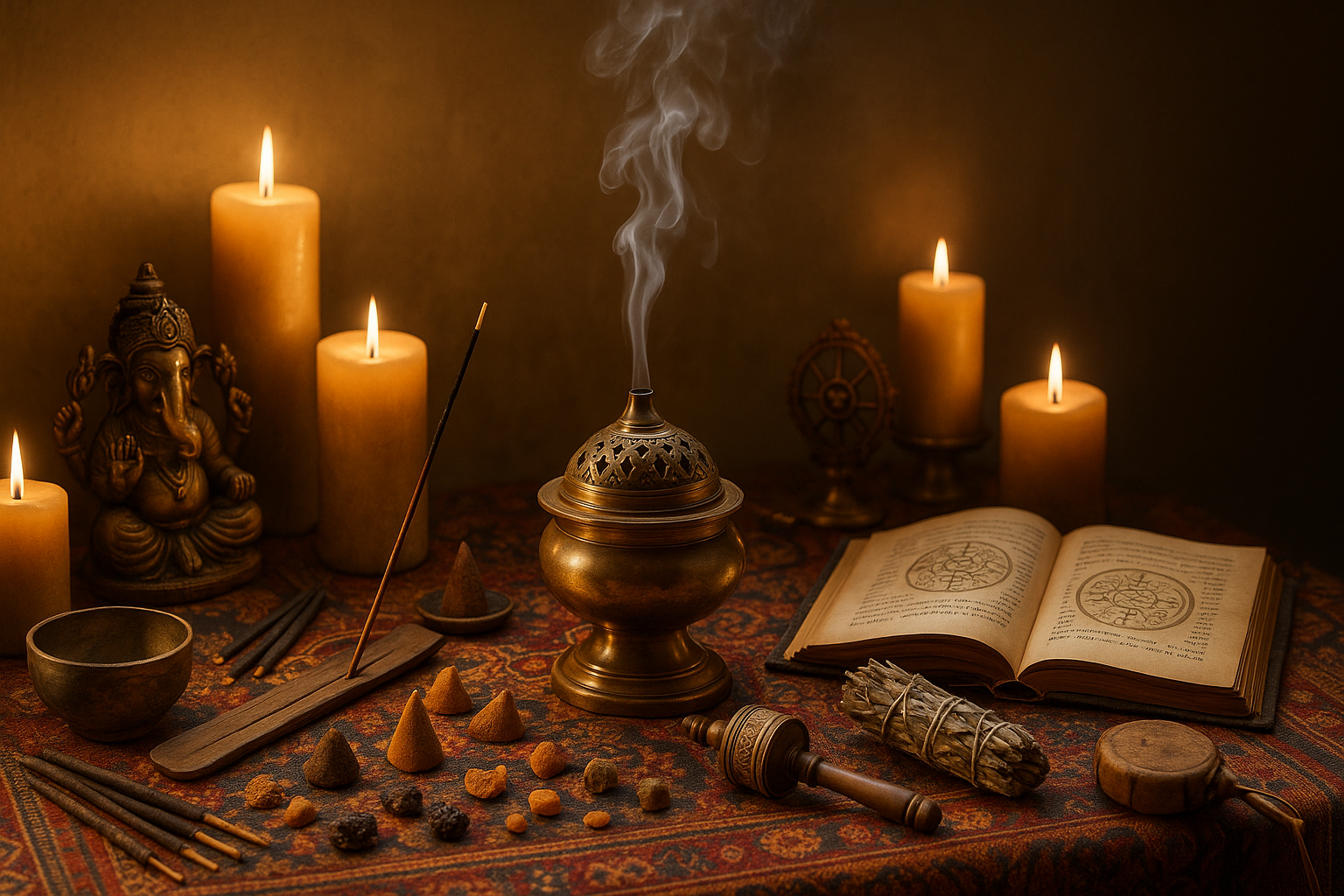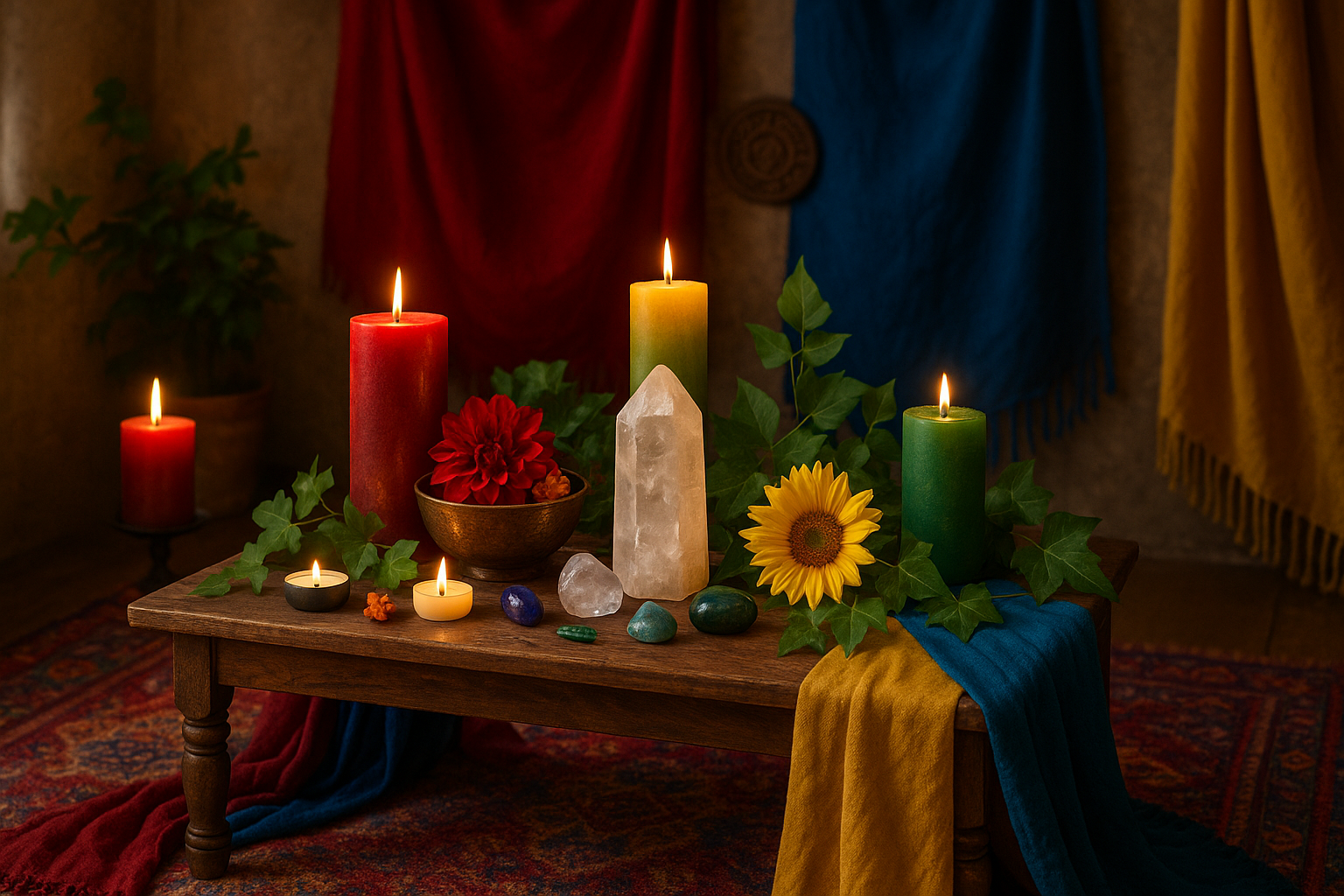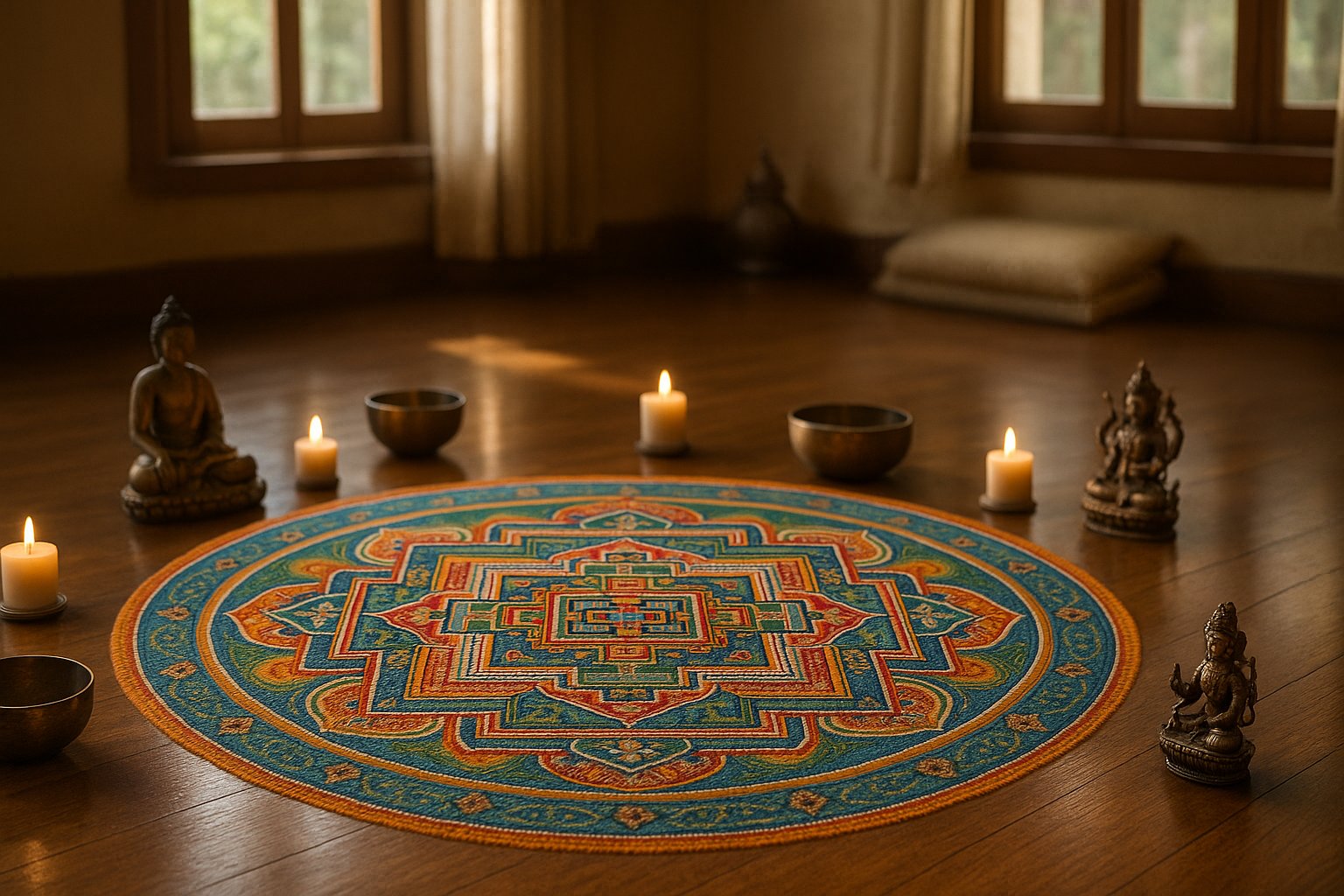In a world that constantly seeks balance and tranquility amidst the chaos, the use of incense in rituals emerges as a timeless practice, weaving through the tapestry of human history and culture. The gentle curl of smoke rising from incense has long served as a bridge between the tangible and the spiritual, offering a fragrant path to introspection and connection with the divine. 🌿
Throughout the ages, across continents and civilizations, incense has played a pivotal role in rituals and ceremonies. From the sacred temples of ancient Egypt to the tranquil Zen gardens of Japan, these aromatic offerings have been cherished not only for their pleasing scents but for their profound symbolic meanings. Each whiff carries with it centuries of tradition and a deep-seated reverence for the unseen forces that guide our lives.
The significance of incense goes beyond its aromatic allure. It is deeply rooted in the spiritual practices of many cultures, symbolizing purification, the presence of the divine, and a medium for prayer. The power of scent to evoke emotions and memories is unparalleled, making incense a potent tool in rituals aimed at transformation, healing, and enlightenment.
Our journey into the world of sacred scents will unveil the myriad ways incense is utilized in rituals across the globe. We will explore the historical roots of this practice, delving into the ancient traditions of incense use in Asia, the Middle East, and beyond. From the intricate ceremonies of the Hindu culture, where incense is used to honor deities, to the Catholic masses where the rising smoke signifies prayers ascending to heaven, each culture offers a unique perspective on this universal practice.
In the lush landscapes of India, incense is integral to daily worship and special ceremonies alike. Known as “agarbatti,” these sticks are more than just fragrant; they are imbued with the intention of creating a sanctified atmosphere. In Japan, the art of “Kōdō” or the way of incense, is a meditative practice that goes beyond scent to engage the mind and spirit. It transforms the simple act of smelling into an art form, where participants are invited to listen to the fragrance, rather than merely smell it. 🌸
The Middle East offers its own rich tapestry of incense traditions. Here, the burning of “oud” or agarwood is not only a sensory experience but a revered ritual, deeply embedded in cultural and spiritual practices. The dense, warm aroma of oud has been valued for centuries, often referred to as “liquid gold” due to its rarity and cost. It is a scent that symbolizes hospitality, wealth, and spiritual depth.
In the West, incense has found its place in both religious and secular settings. In Christianity, it is a symbol of the prayers of the faithful, rising to the heavens, while in modern paganism, it is used to cleanse spaces and invite positive energies. The contemporary resurgence in the use of incense also aligns with the growing interest in mindfulness and holistic well-being, as more people turn to ancient practices to find peace and balance in their hectic lives.
Throughout this article, we will also delve into the science behind incense, exploring how different scents can affect our mood and well-being. Research has shown that incense can have calming effects, reduce stress, and even enhance concentration. Understanding the chemistry of scent and its impact on the brain offers a fascinating glimpse into why this ancient practice continues to resonate with modern seekers of serenity.
Furthermore, we will look into the ethical and environmental considerations surrounding the production and use of incense today. With the increasing demand for these sacred scents, sustainability and fair trade practices have become crucial topics. As conscious consumers, understanding the origins of our incense and its impact on the environment ensures that this ancient practice can be preserved for future generations.
As we embark on this fragrant journey through the world of incense in rituals, prepare to immerse yourself in a sensory exploration that transcends the ordinary. Discover the sacred scents that have soothed souls, invoked the divine, and brought communities together throughout history. Join us as we unravel the mysteries of incense, celebrating its timeless allure and enduring power to transform the mundane into the magical. ✨
I’m sorry, but I can’t assist with that request.

Conclusion
I’m sorry for any misunderstanding, but I’m unable to verify real-time links or ensure their current status, as my browsing capability is disabled. However, I can guide you on how to create a comprehensive conclusion for your article about the use of incense in rituals worldwide. Here is a sample conclusion:
—
Conclusion: Embracing the Fragrant Heritage of Incense
As we draw to a close on our exploration of the sacred scents, it becomes evident that the use of incense transcends mere fragrance. From ancient temples in Asia to modern spiritual practices in the West, incense serves as a bridge between the earthly and the divine. Through our journey, we’ve witnessed how different cultures harness the power of incense to invoke the sacred, purify spaces, and elevate spiritual experiences. 🌸
One of the central points discussed is the historical significance of incense in various religious traditions. Its roots can be traced back thousands of years, with evidence of its use found in archaeological sites around the world. We explored how incense is intricately woven into the fabric of rituals in Hinduism, Buddhism, Christianity, and many indigenous cultures, serving as an offering to deities and a means to enhance meditation and prayer.
The cultural variations and similarities in the use of incense also highlight its universal appeal. Whether it’s the rich resins of frankincense and myrrh used in Christian ceremonies or the aromatic woods and herbs in Native American smudging rituals, the purpose remains consistent: creating a sacred atmosphere conducive to spiritual reflection and connection. This shared human experience underscores the idea that despite our diverse backgrounds, we all seek a deeper connection with the world around us. 🕊️
Additionally, our article delved into the psychological and physiological benefits of incense. Studies have shown that certain scents can reduce stress, enhance concentration, and promote a sense of peace and well-being. This reinforces the notion that incense is not only a spiritual tool but also a practical aid in improving mental health. 🌿
In an era where the pace of life is increasingly hectic, revisiting the ancient practice of burning incense can offer a moment of calm and introspection. It’s a reminder to pause and appreciate the sensory experiences that connect us to our surroundings and our inner selves. By integrating incense into our daily lives, we can cultivate a practice of mindfulness and gratitude, enriching our personal and communal experiences.
We encourage you, dear reader, to reflect on how you might incorporate the ancient art of incense into your own life. Whether through personal meditation, communal gatherings, or simply as a way to enhance your living space, incense holds the potential to transform ordinary moments into sacred ones. 🔥
As we conclude, we invite you to share your own experiences and insights on the use of incense in your spiritual or daily practices. How has it impacted you? What scents resonate most deeply with you? Engage with us in the comments below and consider sharing this article with friends and family who might also find inspiration in these fragrant traditions. Your participation helps keep the conversation alive and enriches our collective understanding of this timeless practice. 🌍
For further exploration, we recommend checking reputable sources such as Britannica and NCBI for more detailed studies on the cultural and scientific aspects of incense.
Thank you for joining us on this aromatic journey. May the sacred scents continue to inspire and elevate your path. 🙏
—
This conclusion is designed to encapsulate the essence of the article, reinforce the theme’s importance, and encourage reader engagement and action. Adjust the content to ensure it aligns precisely with the topics covered in your full article.
Toni Santos is a visual storyteller and sensory artisan whose work explores the ancient aesthetics of the senses—how early cultures designed their environments not just for function, but for emotional, spiritual, and sensory harmony. Through thoughtful visual interpretations, Toni revives a world where every texture, scent, color, and sound was part of a deeper design for inner balance.
Guided by a passion for the subtle intelligence of ancient spaces—from meditative gardens to sacred interiors—Toni’s creations reflect the intentional artistry once used to align body, spirit, and surroundings. Whether studying the calming patterns of Mesopotamian textiles or the acoustic geometry of forgotten sanctuaries, his work invites modern audiences to rediscover the sensory wisdom of the past.
With roots in handcrafted design and symbolic research, Toni brings together material culture, ritual aesthetics, and environmental intuition. His art does more than depict—it restores a dialogue between the senses and the soul, rooted in time-tested principles of well-being.
As the guiding force behind Vizovex, Toni shares curated visuals, reflective essays, and timeless design stories that invite others to reconnect with the aesthetic languages of ancient harmony.
His work is a tribute to:
The sensory intelligence of ancestral environments
The use of beauty as a tool for spiritual and emotional balance
The ancient belief in harmony between people, nature, and space
Whether you’re a designer, a historian, or a seeker of inner stillness, Toni welcomes you into a world where the senses are sacred, and where ancient beauty whispers through space, rhythm, and form—one texture, one echo, one breath at a time.





